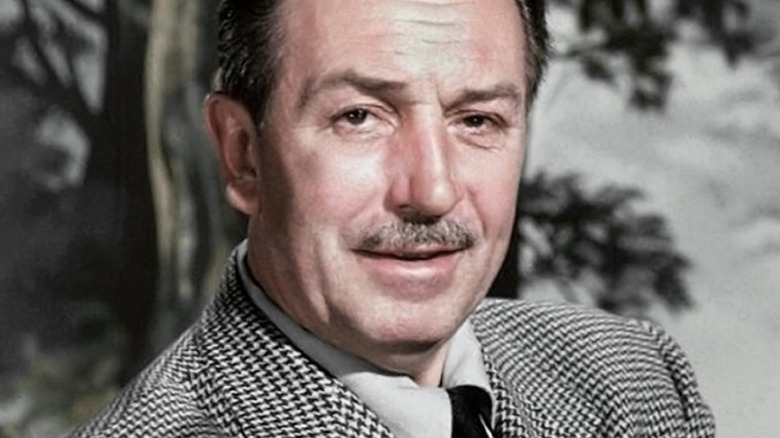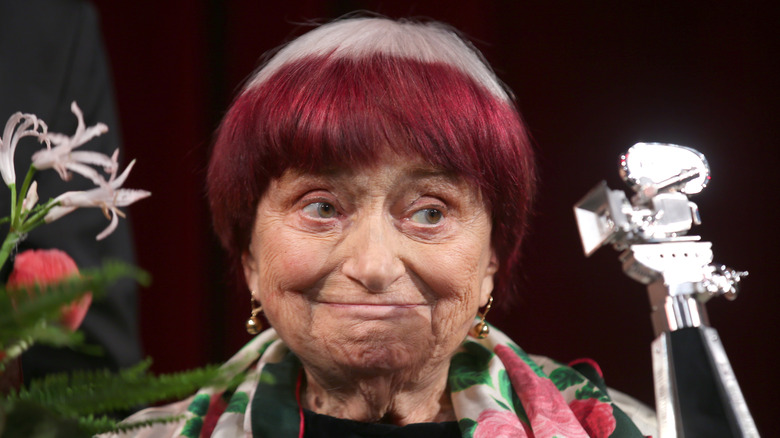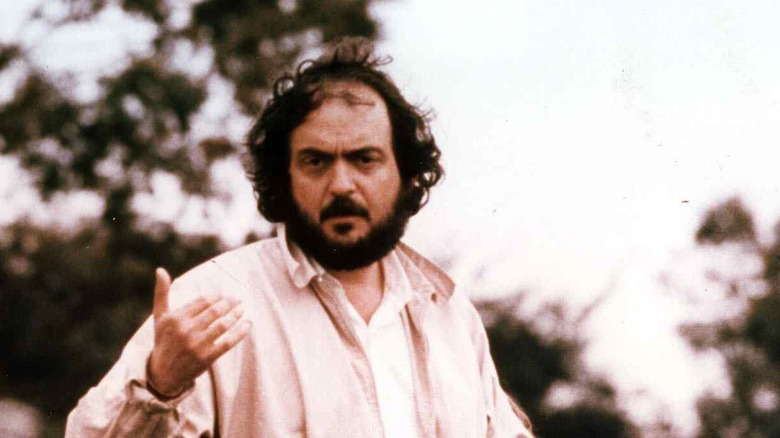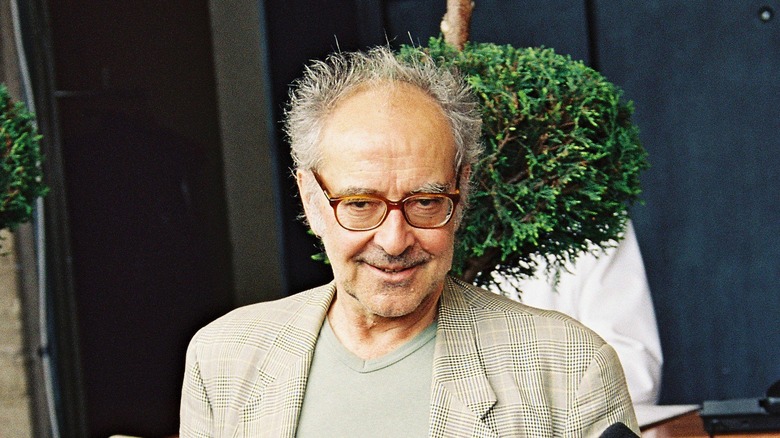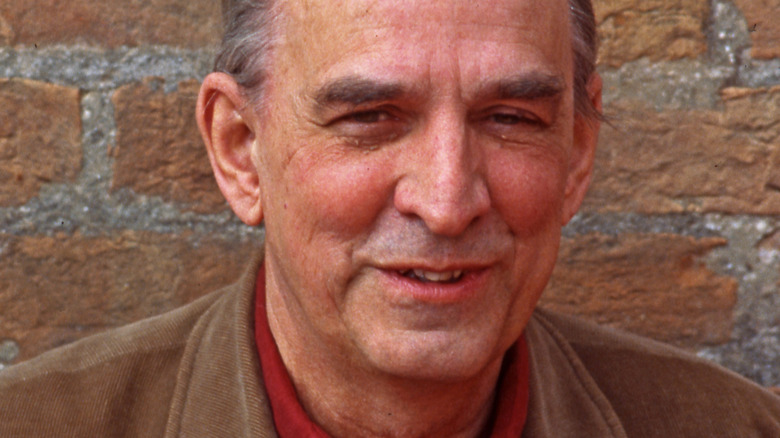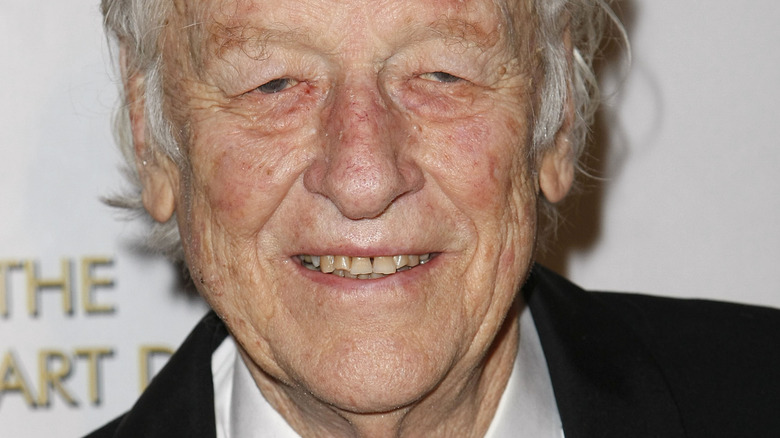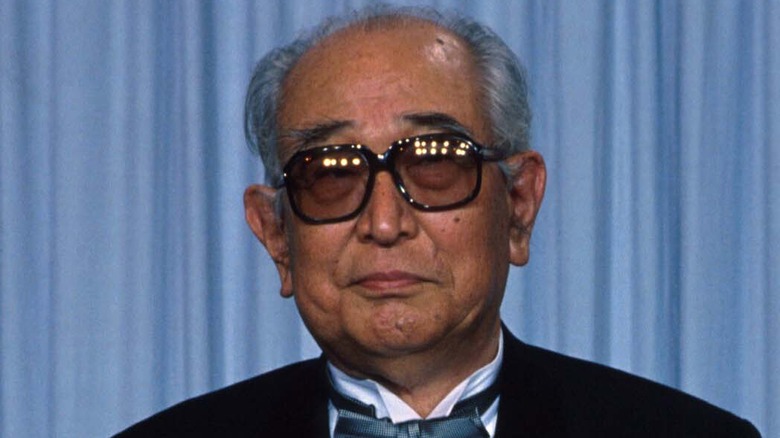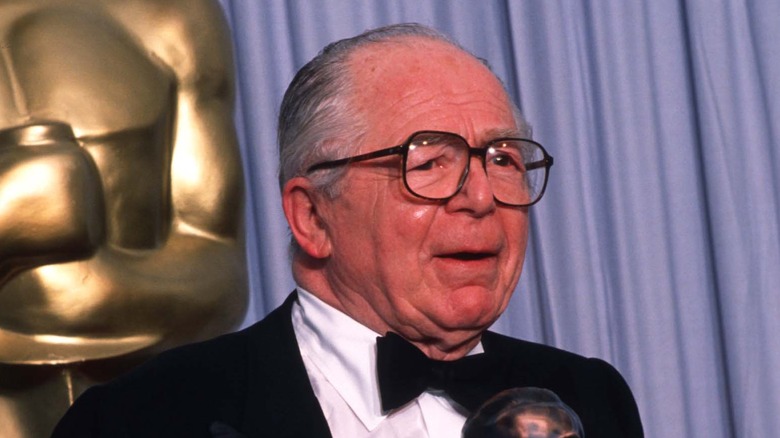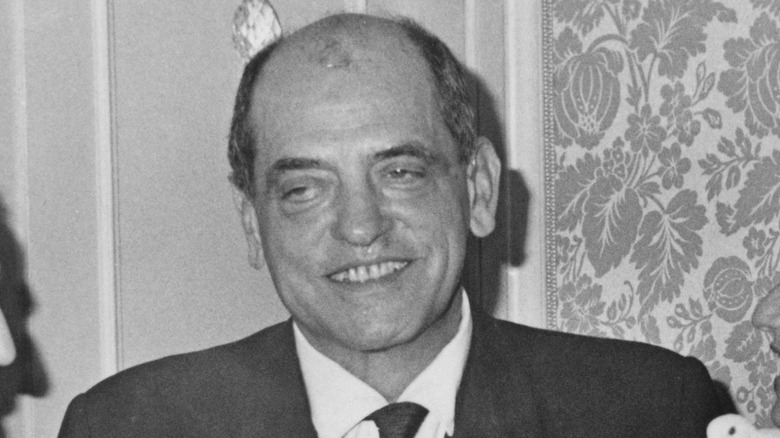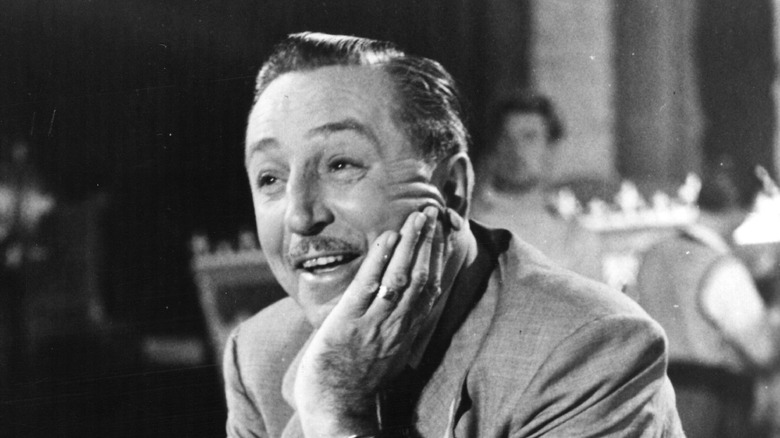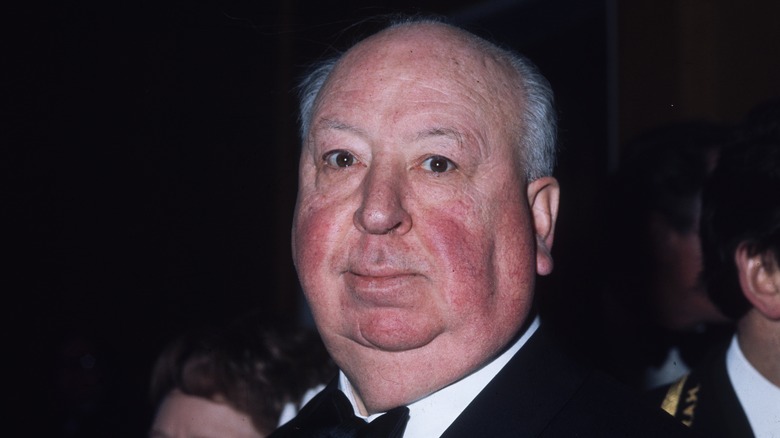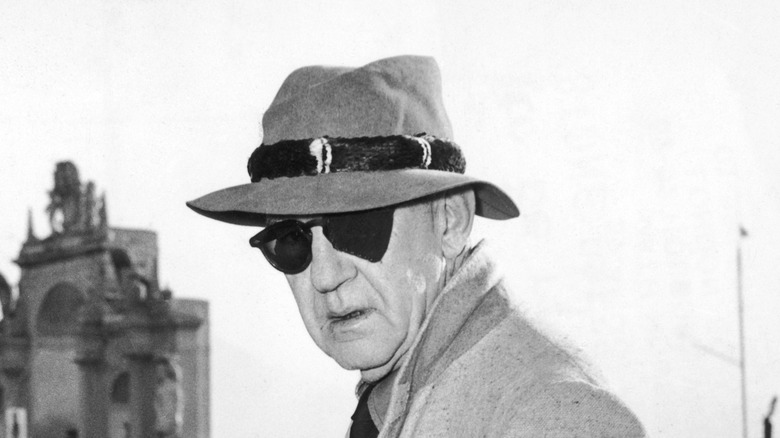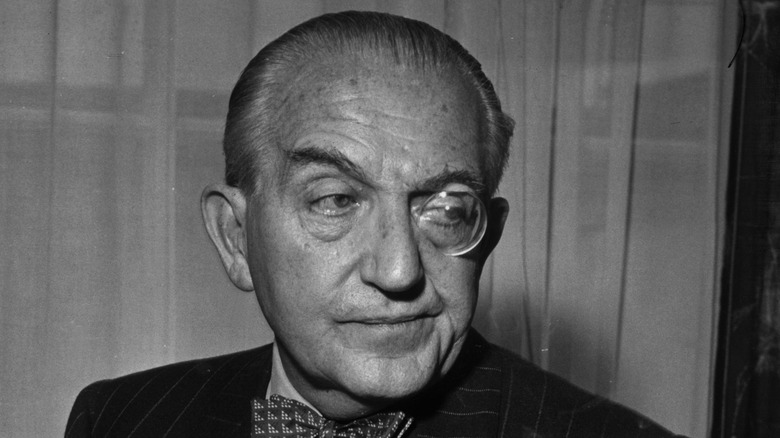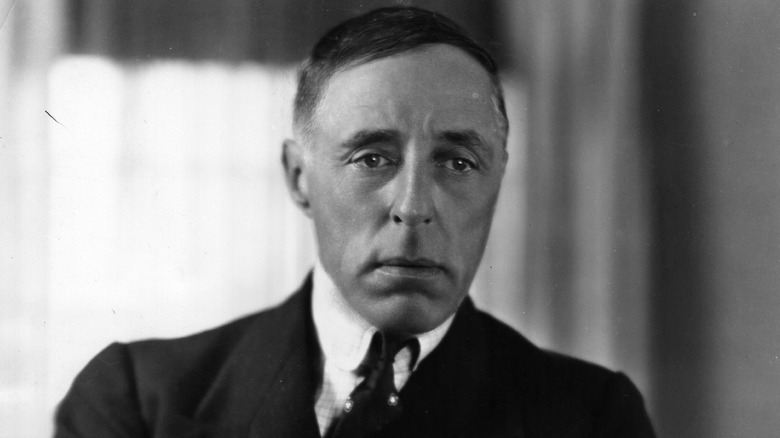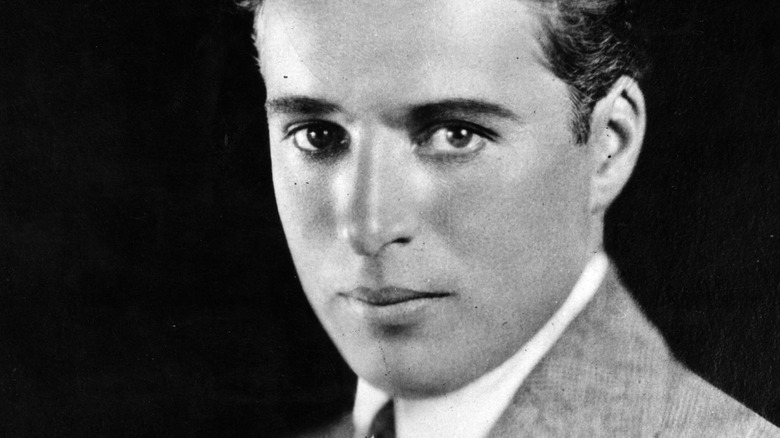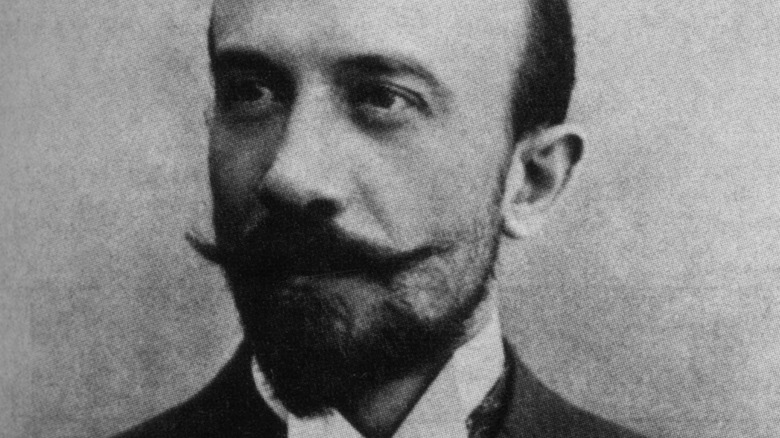The Most Influential Filmmakers Of All Time
It's said that art imitates life, and that's largely true. Another thing art imitates is — well, art. Filmmakers have been churning out their work for more than a century, and regardless of any one person's contribution to the art form, they were all influenced by those who came before them. You don't go to film school and not learn the techniques and methods used by successful filmmakers, and those who skipped film school learn by watching what the greats accomplished.
Ever since Eadweard Muybridge created the first motion picture in 1878, people have been telling stories through film. Some of the greatest filmmakers of all time continue to entertain the masses long after they shuffled off their mortal coils, as their work stands as an enduring example of their accomplishments. Another immortal achievement of the greats is the influence they have had on those who followed them.
People like George Lucas, Steven Spielberg, Woody Allen, Wes Craven, and a myriad of others owe their unique style to a select few. Throughout film history, the influence of one great creator can be seen in the work of others. While the people listed here aren't the only influential filmmakers out there — there are many — they stand as some of the most influential filmmakers of all time. Their work continues to benefit each new generation of filmmakers and audiences alike. Odds are, this will continue to be the case far into the future.
Agnès Varda
While modern cinephiles may not be familiar with Agnès Varda's work, they are undoubtedly aware of the French New Wave film movement of the 1950s. These films were made with new methods of filmmaking that bucked traditional styles and techniques that evoked a particular style, often making use of existentialism and iconoclasm in a documentarian manner as they dealt with political and social issues. Varda was at the center of this influential movement.
Varda became a pioneer of French New Wave films with her debut, 1954's "La Pointe Courte." Outlets like Hollywood Insider have called Varda the "mother of the French New Wave," and BBC reports that she was the first female director to be given an honorary Academy Award. Varda's avant-garde approach to filmmaking abandoned practices of filming inside on sets, preferring to shoot on location — something that was uncommon at the time.
Varda was a feminist who was often overlooked by the media in favor of male directors of her generation. Despite this, she was influential through her use of nonlinear narratives, emphasis on mood over story, and unconventional editing. As compiled by IndieWire, the list of filmmakers influenced by Varda is long and includes names like Greta Gerwig, Lena Dunham, and contemporaries like Jean-Luc Godard. Still, Martin Scorsese described her best, "I got a lot of the inspiration from her, you know? Because she didn't care — 'There are no rules!' That's the key to her work" (via The Hollywood Reporter).
Stanley Kubrick
Stanley Kubrick's unique style and tyrannical attention to detail resulted in some of cinema's greatest films, including "2001: A Space Odyssey," "A Clockwork Orange," and "Spartacus." Kubrick began his career in photography, and it was his passion for photographic equipment that drove him to make movies (via Grailed). Kubrick had a keen eye for detail, and his ability to stage his shots was unmatched.
Far Out observes that Kubrick's framing and unique aesthetics influenced many notable filmmakers of his day and thereafter. Their list includes Paul Thomas Anderson, Christopher Nolan, David Fincher, and many more. Steven Spielberg once said, "Nobody could shoot a picture better in history," and few would argue with him (via Business Insider). In an interview with DGA Quarterly, Michael Mann said, "I wasn't really interested in cinema until I saw 'Dr. Strangelove' ... Prior to 'Strangelove,' it simply had not seemed possible that you could work in the mainstream film industry and make very ambitious films for a big mainstream audience."
Kubrick has a lasting legacy that has permeated popular culture in many ways. "The Simpsons" has used allusions to his work for decades and even included the great filmmaker in an episode. Homages to Kubrick's work have appeared in numerous television series, feature films, and music videos, often emulating his style. Kubrick's impact on the film industry is one that will remain for years to come, as his work has been highly influential for over 65 years.
Jean-Luc Godard
If Agnès Varda was the mother of the French New Wave, then Jean-Luc Godard was its father. Like Varda, Godard's work began in the 1950s, and his unconventional style and dislike of traditional French filming methods helped kick off the movement. Godard began his career as a film critic, and after becoming a filmmaker himself, he strove to avoid the many aspects of traditional French cinema he criticized, firmly establishing his place in cinematic history in the process.
Godard's first film, "À Bout de Souffle" ("Breathless"), is arguably his most influential, as it was one of the earliest New Wave films to achieve international attention. Godard's use of jump cuts, handheld cameras, natural dialogue and lighting, on-location shooting, and the use of unknown actors checked every box in the New Wave movement. It differed significantly from what was produced in Hollywood — but it wouldn't be long before filmmakers across the pond emulated Godard's style.
Many of the filming tropes we take for granted today began with or were perfected by Godard. The Boston Herald charts his influence in the works of Lars von Trier, Terrence Malick, Nuri Bilge Ceylan, Kelly Reichardt, Lav Diaz, and more. Quentin Tarantino is one of cinema's greatest independent directors, and he said Godard taught him the "fun and the freedom and the joy of breaking rules ... I consider Godard to be to cinema what Bob Dylan was to music."
Ingmar Bergman
Ingmar Bergman was a prolific filmmaker, a dedicated stage director, and a successful writer. Like many filmmakers on this list, he was a workaholic and had a way of examining the human condition that set his work apart from his contemporaries, as noted by The Guardian. Bergman's cinematic work began in Sweden in the 1940s, but he wasn't well known until 1955's "Smiles of a Summer Night" and 1957's "The Seventh Seal" and "Wild Strawberries" that Bergman became known to the wider world.
He is probably best known for "The Seventh Seal," which he developed from his play "Wood Painting." The Criterion Collection wrote, "One of the most influential films of its time, 'The Seventh Seal' is a stunning allegory of man's search for meaning and a work of stark visual poetry." Bergman's style offered an introspective analysis of humanity's struggles with the bleak nature of mortality through the lens of conflict, religion, and everyday life.
His work proved filmmaking wasn't simply about telling a story — it was a proper art form capable of conveying deep meaning on the human condition. Bergman's work influenced many great filmmakers around the world. Notable directors influenced by Bergman are Woody Allen, Martin Scorsese, David Lynch, and the Coen brothers. Homages to Bergman's work continue to appear in movies, music videos, and more.
Ray Harryhausen
Ray Harryhausen was one of the most innovative animators and special effects artists of the 20th century. His films employed what he called Dynamation, a unique method of stop-motion animation that established Harryhausen as one of his generation's greatest special effects animators. Harryhausen gained widespread attention for his work in 1958's "The 7th Voyage of Sinbad," which featured numerous animated 3D characters interacting with live-action actors with such fluidity it holds up to this day.
"The 7th Voyage of Sinbad" opened doors for Harryhausen, who continued to impress with "Jason and the Argonauts." The film features one of Harryhausen's most complex animations, with seven skeleton warriors engaged in a sword fight that runs for nearly five minutes. His final film, "Clash of the Titans," wowed audiences with the battle between Perseus and Medusa, the climactic battle with the Kraken, and the flying mechanical owl, Bubo.
Harryhausen wasn't the only special effects artist of his generation, but his impact on the industry can be seen in modern VFX. National Galleries Scotland observed that his work inspired a generation of filmmakers, including everyone from George Lucas and Steven Spielberg to Peter Jackson and Sam Raimi. Guillermo del Toro said, "No one will ever compare to Ray Harryhausen. He was a true pioneer, a man who took the mantle of stop-motion and elevated it to an art form ... His knowledge, faith and dedication shaped generation after generation of filmmakers."
Akira Kurosawa
Some of the most visually beautiful films ever put to celluloid came from the inimitable talents of Akira Kurosawa. The Japanese filmmaker got his start directing propaganda films during World War II, but soon after, he branched out and created what many have called some of the greatest movies ever made. Kurosawa's use of multiple cameras during pivotal action sequences, slow motion, and a telephoto lens to flatten a frame make his work unique for the time.
While known as a pioneer of Japanese cinema, his work had many important Western influences, and in turn, Kurosawa influenced some of the most renowned Hollywood filmmakers of the 20th and 21st centuries. George Lucas cites Kurosawa's "The Hidden Fortress" as his inspiration for the narrative structure of "Star Wars," and you can see a great deal of his influence in the franchise's films. In Kurosawa's 99th birthday tribute, Lucas said Kurosawa "had a tremendous influence on my life and on my work," while Steven Spielberg admired his "amazing body of work that continues to inspire all of us."
Kurosawa's movies were the first Japanese films to be remade in the West, and the one that's been remade the most is also considered his greatest achievement, "The Seven Samurai." That film has been remade into "The Magnificent Seven," "A Bug's Life," and many others, as observed by Far Out. Other filmmakers he's influenced include Francis Ford Coppola and Martin Scorsese, who said, "Kurosawa was my master and so many others."
Billy Wilder
For more than 50 years, Billy Wilder directed and wrote some of the most successful and critically acclaimed films of classic Hollywood cinema. The man was ridiculously prolific and is best known for his mastery of comedy. He first gained attention with his fourth film, "Double Indemnity," in 1944. Over the next five decades, Wilder directed and wrote "Sunset Boulevard," "Sabrina," "The Seven Year Itch," "Some Like It Hot," "The Apartment," and many more. Wilder's work earned him a total of 21 Academy Award nominations and five wins for directing and screenwriting.
Wilder was a master at making comedies, and while his directing style certainly attributed to his success, his dialogue made his movies hits. Few could write compelling dialogue like Wilder. You only have to sit and watch one of his movies to note the subtlety he used to mask sexuality behind innuendo to understand his genius. He could juggle between being direct and utterly subtle in a single conversation without ever losing the audience.
Wilder's work has influenced countless filmmakers over the years, though some more than others. His impressive mastery of dialogue can be seen throughout the works of Spike Lee, Martin Scorsese, and Cameron Crowe, who published the book, "Conversations with Wilder" in 1999. Crowe introduces the man he calls his mentor by writing that Wilder is "the greatest living writer-director." Crowe used footage Wilder shot for "Avanti!" in "Jerry Maguire" in honor of his mentor.
Luis Buñuel
Luis Buñuel's first silent film, "Un Chien Andalou," is considered a classic. Its provocative imagery and shocking visuals ensure it's still viewed in arthouses and on college campuses nearly a century after it was made. Buñuel's early work is associated with the surrealist movement, and he collaborated with Salvador Dali on "Un Chien Andalou." Despite beginning in silent films through a lens of surrealism, Buñuel soon branched out into other genres.
He was a master at using absurdism to satirize class division, and he went on to work all over the world. His films embraced different genres, but his distinctive style always shone through regardless of the subject. This could be seen in his sound editing, use of original music, and his mise-en-scène. Ingmar Bergman once said of his work that "Buñuel nearly always made Buñuel films," suggesting his artistic fingerprint could be seen throughout his entire body of work.
Buñuel believed movies were akin to "an involuntary imitation of a dream," and he called the art of filmmaking "the superlative medium to express the world of thought, feeling and instinct" (via The New York Times). His work has been highly influential through his overt challenging of conventional norms and attacks on religious institutions, specifically the Catholic church. IndieWire put together a list of filmmakers influenced by Buñuel's work that includes Woody Allen, Guy Maddin, Miguel Gomes, Jonathan Glazer, Gaspar Noe, Aki Kaurismaki, and David O. Russell.
Walt Disney
You'd be hard-pressed to find many people today who haven't heard of Walt Disney. Even if they aren't familiar with the man, his body of work remains influential long after his death in 1966. Walt Disney was a pioneer of 2D animation, and while he began filming shorts, he was adamant that animation was a viable medium for feature films. Disney wasn't the first animator to bring his work to the masses, but "Snow White and the Seven Dwarfs" was the first feature-length animated movie ever made.
Disney proved animation could tell a story as well, if not better than, live-action, and he built an empire on this assertion. Every theme park that bears his name, the movies produced by his studios, and much more came from Disney's ambition and talent. He won 22 Academy Awards and numerous other accolades throughout his career. Disney's influence on filmmakers is evident in animators' work around the world, but some followed more closely in his footsteps.
John Lasseter got his start working for Disney Studios but was fired. Not long after, Lasseter built Pixar and became the so-called "Walt Disney of the digital age" (per The Hollywood Reporter). Despite the bad blood, Disney clearly influenced his drive and determination. Similarly, Don Bluth worked at Disney but left to establish his own studio. Upon meeting his idol, Bluth said, "It was like meeting Santa Claus for the first time, a very legendary image" (via the Los Angeles Times).
Alfred Hitchcock
Alfred Hitchcock's six decades of moviemaking resulted in some of the most important films ever made. A master of suspense, Hitchcock knew how to bring the audience into his movies. His signature style — often referred to as "Hitchcockian" — used innovative camera movements and editing techniques to transport the audience into the film. Hitchcock focused on details while eliciting emotion to maximize anxiety and was renowned for his filmmaking abilities.
Hitchcock was the master of the MacGuffin, a plot element meant to attract the viewer's attention, and these could serve as a distraction or the driving focus of a character throughout the film. Hitchcock's MacGuffins include letters, gloves, and anything else that conveys importance while distracting the viewer. His influence in this regard is widespread, and MacGuffins can be found in the letters of transit in "Casablanca," the One Ring in "The Lord of the Rings," the briefcase in "Pulp Fiction," and the titular bird in "The Maltese Falcon."
Hitchcock's style and method of storytelling have a long legacy of influence in modern cinema. Decider observes that many filmmakers' work exhibits Hitchcockian elements, including that of David Fincher, Steven Spielberg, David Lynch, M. Night Shyamalan, Brian De Palma, and others. Lynch, in particular, is a fan of Hitchcock's landmark film "Rear Window," praising the "way in which Alfred Hitchcock manages to create -– or rather, re-create -– a whole world within confined parameters," which he achieves "through a complete control of film making technique" (via Far Out).
John Ford
For more than 50 years, John Ford created some of the most influential and significant movies of the 20th century, which influenced generations of filmmakers. Ford is likely best known these days for his many Westerns, but he wasn't limited to the genre. Ford won four best director Academy Awards for "The Informer," "The Grapes of Wrath," "How Green Was My Valley," and "The Quiet Man" — none of which are Westerns. Still, his work with John Wayne resulted in some of the greatest Westerns ever made.
"Stagecoach," "The Man Who Shot Liberty Valance," and "The Searchers" are but a few of his most impressive Westerns. Ford was widely regarded for his ability to block and frame shots in wide views, almost always against harsh, desolate backgrounds. This established setting in ways few filmmakers could imitate at the time, and Far Out identifies elements of his work in numerous films from other directors. Orson Welles once said, "I prefer the old masters, by which I mean John Ford, John Ford and John Ford," when asked about his favorite directors (via BFI).
Akira Kurosawa, who influenced many with his work, once said, "I have respected John Ford from the beginning. Needless to say, I pay close attention to his productions, and I think I am influenced by them" (via Golden Globes). Even filmmakers who despise Ford owe a lot to his style. Quentin Tarantino famously hates Ford, but it's impossible to miss his influence on "The Hateful Eight."
Fritz Lang
Fritz Lang, whom BFI dubbed the "Master of Darkness," was one of Germany's most influential directors of the 20th century. He was one of the most prominent filmmakers of the Expressionism movement, and his work has stood the test of time. Lang began his film career during the silent era, and while he had several impressive movies throughout the 1920s, 1927's "Metropolis" earned Lang a place in film history. "Metropolis" is widely regarded as one of the most influential films in history, though it flopped finacially and Lang apparently hated it upon its release.
Regardless, the art and production design of "Metropolis" not only influenced filmmakers but served as an inspiration for set designers. You can see elements of the film in "Blade Runner" and "Batman," which create landscapes and settings that stand out as characters in and of themselves. This style was undoubtedly influential, but it wasn't his only film to inspire those who followed him. Alfred Hitchcock said that Lang's first movie, "Der Müde Tod," made a "special impression" on him (via Silent London).
Another of Lang's influential films is "M," which was his first "talkie." The movie is structured as a procedural drama and incorporates several filmmaking techniques now common today. Lang's use of long tracking shots was an innovation at the time. "M" is among the greatest films ever made and helped establish Lang as one of the most important directors of his time (per Far Out).
D.W. Griffith
D.W. Griffith has a complicated legacy in the history of filmmaking, but that doesn't make him any less important. His work made him an incredibly influential filmmaker, and he pioneered techniques now taken for granted in modern cinema. The complication of his legacy stems from his most famous film, 1915's "The Birth of a Nation." The movie was incredibly successful financially, and it holds the distinction of being the first movie shown at the White House. It's also extraordinarily racist and was largely responsible for reviving the KKK in the 20th century.
Despite the nature of his early work, Griffith was undoubtedly a pioneer of his craft. He used film to develop emotion in the audience in ways that hadn't been done previously. The medium was still developing in the early 1900s, but it had been around for some time. Still, movies lacked a narrative storytelling structure until Griffith came along and put his mark on moviemaking.
In many ways, Griffith's work created modern cinema by transforming it from a curiosity into a modern storytelling medium. He co-created United Artists in 1919 to offer filmmakers a non-commercial option for making feature films, which helped broaden the scope of moviemaking for the rest of the century. Griffith's work influenced every filmmaker who followed, but some of the people who followed his example are Charlie Chaplin, Orson Welles, Stanley Kubrick, and Sergei Eisenstein (via History).
Charlie Chaplin
For many modern cinephiles, Charlie Chaplin is best known for his Tramp character, but he was far more than that. Chaplin's career began in the silent movie era and continued for decades, covering most of the 20th century. He began performing as a teenager, and this brought him from London to the United States in 1910. By the end of 1913, he was contracted by Keystone Studios and developed the Tramp persona. By the time he began directing films for First National, he was an international star.
In the beginning, Chaplin's approach to filmmaking utilized slapstick but with a restraint not seen in his contemporaries' work. He knew how to play out a scene to the exact moment it needed to end, never going too long or short. This focus was established on his Tramp persona, and he became famous for it. His films were structured around themes and settings rather than a cohesive storyline, often integrating tragedy and comedy. Chaplin's "The Kid" established him as one of the greatest filmmakers of his day, and it was just the beginning.
Chaplin went on to co-found United Artists, and this helped him achieve his artistic goals for decades. His films, "City Lights," "Modern Times," and "The Great Dictator," are some of the best examples of his work. Many artists have been inspired by Chaplin's slapstick, directing, and writing styles, including Raj Kapoor, Gene Wilder, Buster Keaton, and Robert Downey Jr., who played him to perfection in 1992's "Chaplin."
Georges Méliès
Even if you don't know his name, odds are, you've seen his work. Georges Méliès is one of the earliest pioneers of filmmaking, and his work influenced the development of the motion picture as a viable art form. Méliès began his professional career as an illusionist, and his experiences in making complex illusions helped him do things with motion pictures that hadn't been done previously. In many ways, he's the father of special effects.
Méliès is best known for 1902's "A Trip to the Moon," which features an impressive special effects shot of a capsule crashing into the Moon's eye. You've doubtless seen it somewhere because it's been remade and reused countless times in the century since it was created. That film and "The Impossible Voyage" are two of the most important films in the history of science fiction due to their influence on the genre.
Méliès used his illusions to create special effects shots nobody could emulate. One of his most famous was "The Four Troublesome Heads," which features Méliès removing his head three times to create a musical chorus. Méliès' body of work established many of the principles developed into modern special effects, so his influence exists throughout the industry. Everyone from Fritz Lang and George Lucas to Ray Harryhausen and James Cameron owes a great deal to this incredible pioneer, as does everyone who enjoys movies with impressive SFX.
